zkSync Gas Fee Calculator
Compare Your Transaction Costs
See how much you save by using iZiSwap on zkSync Era versus Ethereum mainnet
Key Takeaways
- iZiSwap runs on zkSync Era, offering sub‑penny gas fees and fast settlement.
- It uses concentrated liquidity AMM, similar to Uniswap V3, but supports only 5 tokens and 10 pairs.
- Zero user reviews and modest traffic mean the platform is still early‑stage and carries higher risk.
- A pending $iZi token airdrop could attract speculative users.
- Compared to bigger DEXs, iZiSwap has lower TVL, limited token list, and fewer integrations.
This review focuses on iZiSwap, the zkSync‑based DEX, and examines whether its technical edge and airdrop promise outweigh the obvious adoption challenges.
What Is iZiSwap (zkSync)?
iZiSwap is a decentralized cryptocurrency exchange built on the zkSync Era layer‑2 solution. Launched in 2023, it lives inside the broader iZUMi Finance ecosystem, which brands itself as a “Liquidity as a Service” platform across multiple chains.
zkSync Era, the network iZiSwap runs on, is a ZK‑rollup that compresses hundreds of Ethereum transactions into a single proof, slashing gas costs to around one cent while preserving Ethereum’s security guarantees.
How the Exchange Works
The core of iZiSwap is a concentrated liquidity AMM. Liquidity providers (LPs) can lock their capital into narrow price bands instead of the whole curve, a model popularized by Uniswap V3. This theoretically yields higher returns per dollar of capital, but it also demands more active management to avoid impermanent loss.
Trading pairs are limited to five tokens - currently ETH, USDC, USDT, DAI, and zkSync’s native $ZKS token - forming ten possible markets. Users swap assets by connecting a wallet (MetaMask or any WalletConnect‑compatible wallet set to the zkSync Era network), then approving the token spend.
Fees, Performance, and Liquidity
Because transactions settle on zkSync Era, the average gas fee hovers near $0.01, a stark contrast to the $10‑$30 fees on Ethereum’s mainnet during peak periods. The platform charges a flat 0.30% trading fee, split between LP rewards and a small protocol treasury.
Public data on total value locked (TVL) and daily volume is scarce. FxVerify’s traffic snapshot shows only about 65,800 monthly visitors, with a 55% bounce rate - a sign that the user base is still tiny. By comparison, Uniswap consistently reports billions in TVL and daily volumes exceeding $1 billion.
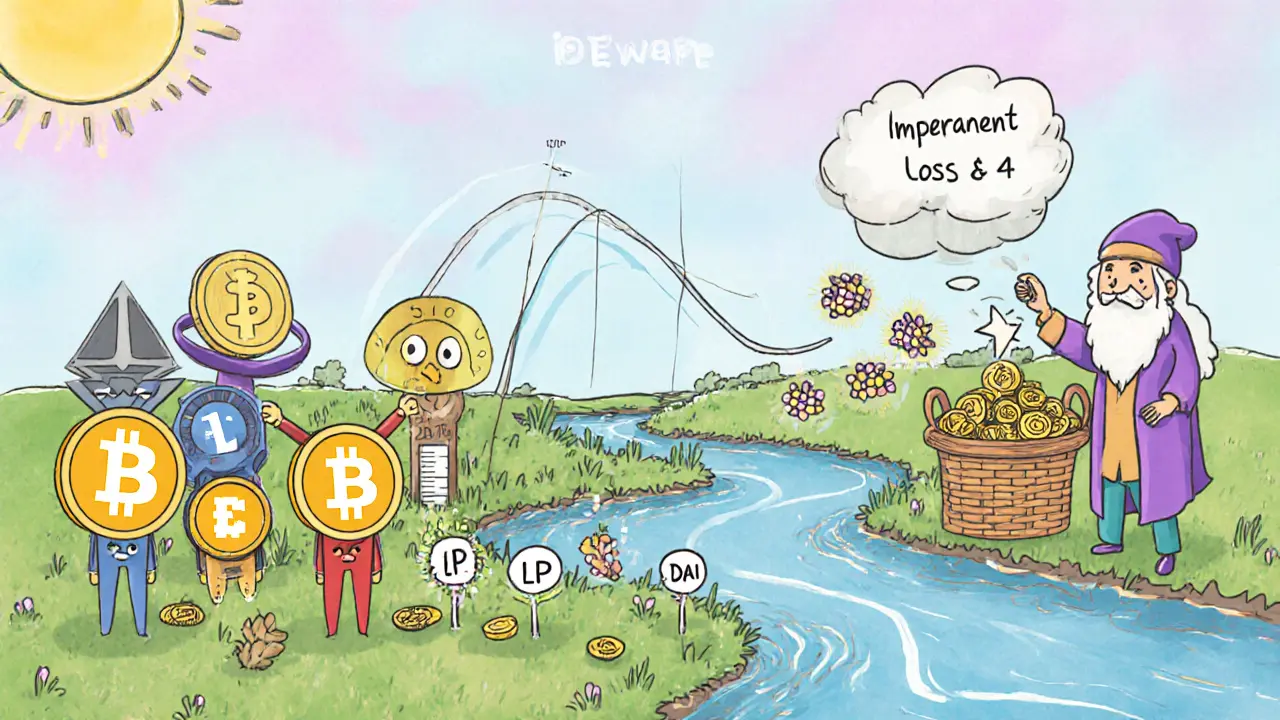
Security and Risks
iZiSwap’s smart contracts are open‑source, but no third‑party audit report is publicly linked. This lack of audited code adds a layer of smart‑contract risk, especially for early‑stage AMMs that handle concentrated liquidity.
Regulatory uncertainty also looms. As a decentralized platform, it does not enforce KYC/AML, but users should be aware of local crypto regulations that might affect how they can bridge assets to zkSync Era.
Finally, the reliance on a single Layer‑2 solution creates a dependency risk. If zkSync’s roadmap stalls or the rollup experiences a critical bug, iZiSwap’s entire ecosystem could be impacted.
Upcoming $iZi Token Airdrop
iZUMi Finance has announced a future $iZi token airdrop. While details on eligibility and distribution are vague, the promise of free tokens is already driving speculative traffic. Users who provide liquidity or trade frequently could qualify, but the exact criteria remain undefined.
Potential airdrop participants should weigh the upside against the cost of bridging assets and the possibility of impermanent loss on LP positions.
How iZiSwap Stacks Up Against the Competition
Below is a quick side‑by‑side look at iZiSwap and two well‑known DEXs. The table focuses on practical factors that matter to everyday traders.
| Feature | iZiSwap (zkSync) | Uniswap V3 (Ethereum) | SushiSwap (Ethereum) |
|---|---|---|---|
| Network | zkSync Era (ZK‑rollup) | Ethereum L1 | Ethereum L1 |
| Liquidity Model | Concentrated liquidity AMM | Concentrated liquidity AMM | Standard AMM (full‑range) |
| Typical Gas Fee per Trade | ~$0.01 | $5-$30 (peak) | $5-$30 (peak) |
| TVL (approx.) | Not publicly disclosed (likely <$10 M) | $7 B+ | $2 B+ |
| Token Support | 5 tokens / 10 pairs | Thousands of tokens | Thousands of tokens |
| Airdrop Potential | $iZi token (announced) | None | None |
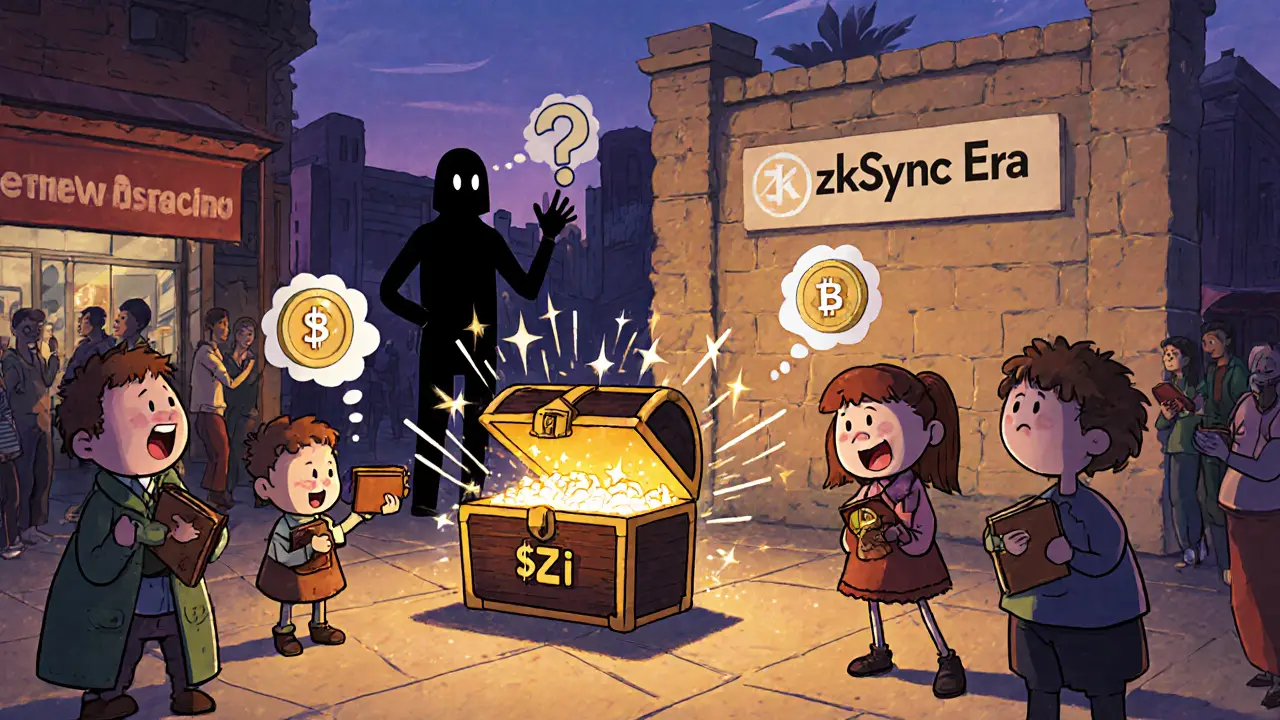
Getting Started on iZiSwap
- Install MetaMask (or a WalletConnect‑compatible wallet).
- Add the zkSync Era network: RPC URL
https://zksync2-mainnet.zksync.io, Chain ID 324. - Bridge assets from Ethereum to zkSync using the official zkSync Bridge.
- Visit iZiSwap and click “Connect Wallet”.
- Select a trading pair, enter the amount, and confirm the swap.
- If you want to provide liquidity, go to the “Pool” tab, set your price range, and approve the tokens.
Remember that moving funds across chains consumes gas on both the source and destination networks, so factor that into your cost calculations.
Pros and Cons
- Pros
- Sub‑penny transaction fees thanks to zkSync.
- Concentrated liquidity can boost LP yields.
- Potential $iZi airdrop creates an extra incentive.
- Early‑stage platform may offer high upside for early adopters.
- Cons
- Only five supported tokens limits trading opportunities.
- Zero user reviews and low traffic signal limited adoption.
- Smart‑contract audit not publicly available - higher security risk.
- Heavy reliance on zkSync Era’s success; any setback affects iZiSwap.
Is iZiSwap Worth Trying?
If you’re a crypto enthusiast who enjoys experimenting with new Layer‑2 solutions and you’re comfortable managing LP positions, iZiSwap can be a cheap way to trade and potentially catch an airdrop. However, if you need deep liquidity, a broad token selection, or audited safety guarantees, sticking with established DEXs like Uniswap V3 or SushiSwap makes more sense.
In short, treat iZiSwap as a niche, experimental platform-great for learning and speculative farming, but not yet a primary hub for large‑scale trading.
Final Thoughts
The iZiSwap review shows a platform that blends cutting‑edge ZK‑rollup tech with a liquidity model designed for efficiency. Its biggest selling point right now is the ultra‑low fee environment and the promise of a $iZi token airdrop. Yet the limited token list, lack of user feedback, and unclear security posture mean the exchange is still very much in the proof‑of‑concept phase.
Watch the upcoming iZi token distribution and zkSync’s ecosystem growth. If both gain momentum, iZiSwap could graduate from a curiosity to a viable alternative DEX. Until then, keep a modest exposure and always test with small amounts.
What network does iZiSwap run on?
iZiSwap operates on the zkSync Era layer‑2 network, a ZK‑rollup that offers sub‑cent gas fees and fast settlement while inheriting Ethereum’s security.
How many tokens can I trade on iZiSwap?
Currently the exchange supports five tokens (ETH, USDC, USDT, DAI, and zkSync’s $ZKS) forming ten possible trading pairs.
Is there a $iZi token airdrop?
Yes, iZUMi Finance has announced an upcoming $iZi token airdrop, though the exact qualification criteria and distribution timeline are still undefined.
Can I provide liquidity on iZiSwap?
You can add liquidity to any of the supported pairs using the concentrated liquidity model. You’ll need to set a price range and approve the tokens in your wallet.
How do I bridge assets to zkSync Era?
Use the official zkSync Bridge (bridge.zksync.io) or a supported third‑party bridge. Send your tokens from Ethereum, pay the L1 gas fee, and they will appear on zkSync after a few seconds.
Is iZiSwap audited?
As of now, no third‑party audit report is publicly linked on the platform, so users should treat the smart contracts as unaudited and proceed with caution.
What wallets are compatible with iZiSwap?
MetaMask works after you add the zkSync Era network. Any WalletConnect‑compatible wallet (e.g., Trust Wallet, Rainbow) can also connect.
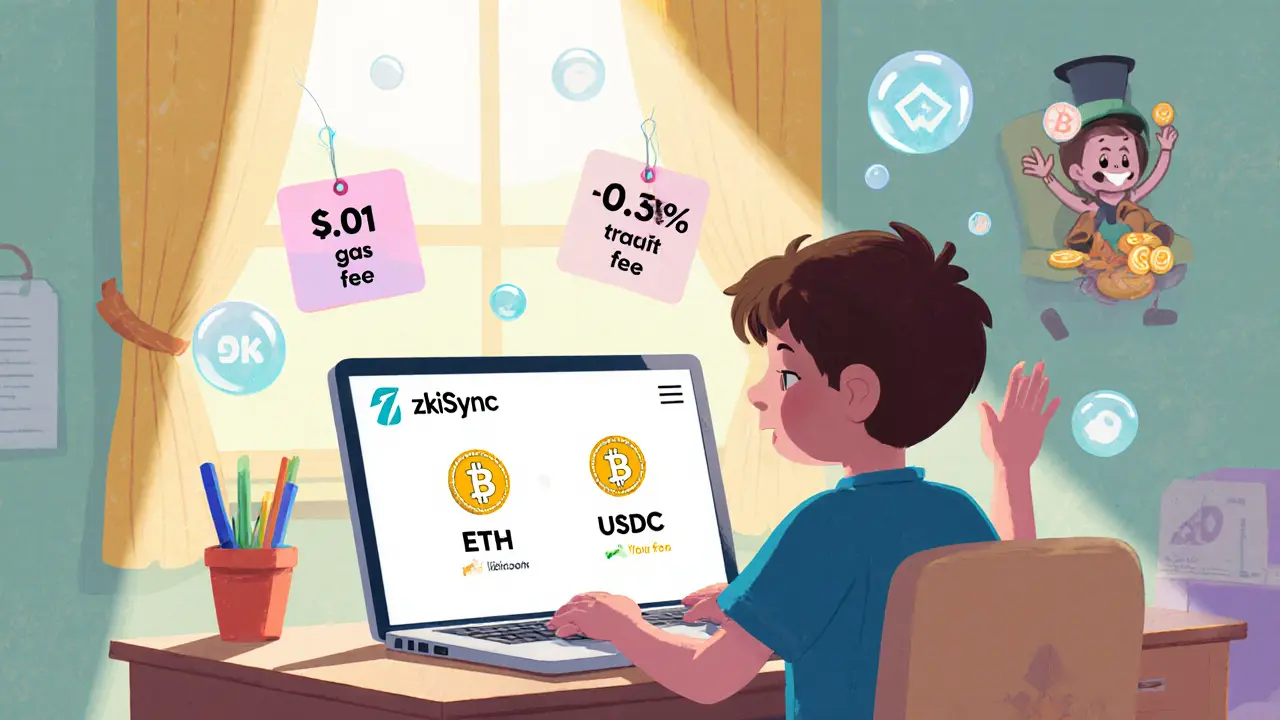
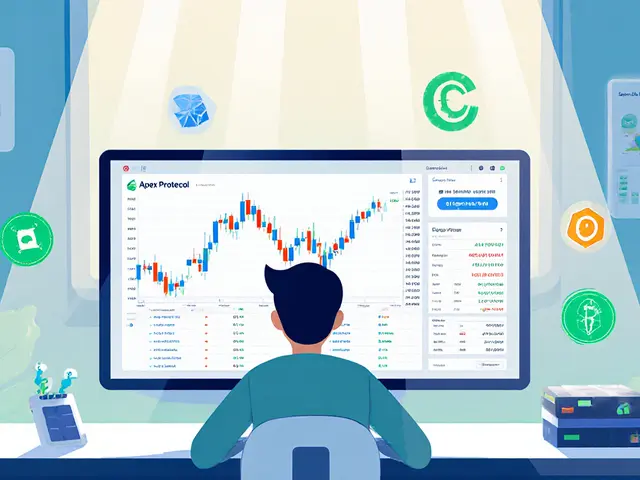
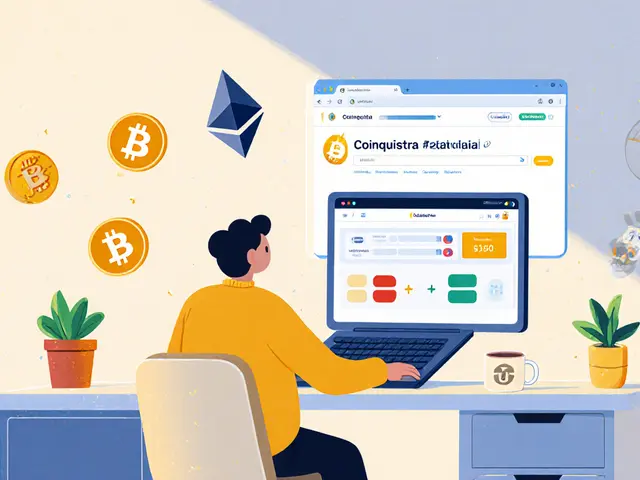
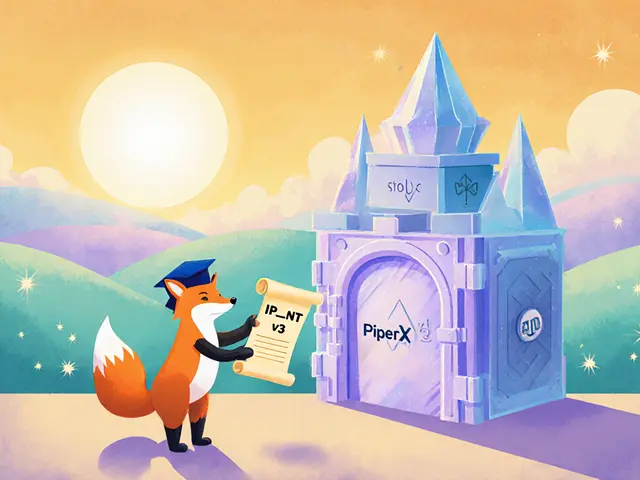

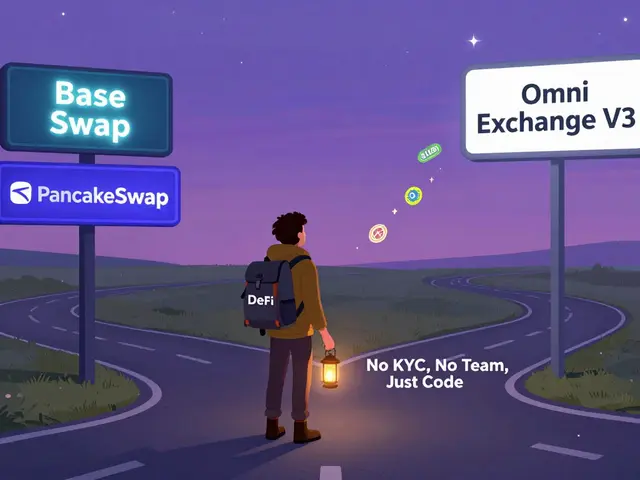
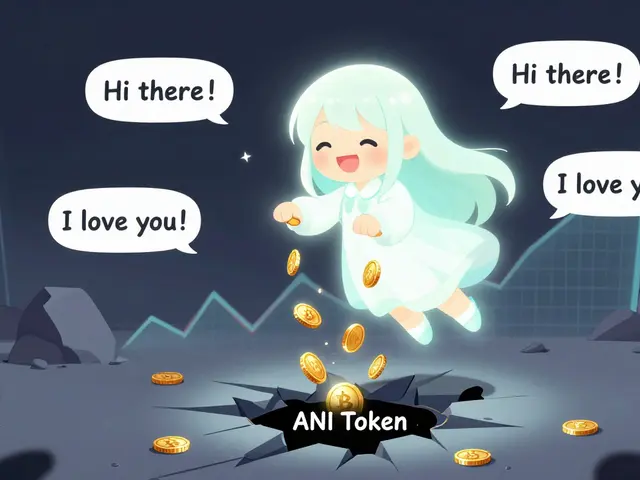


Ryan Comers
October 19, 2025 AT 08:52iZiSwap is just another meme project riding the airdrop hype 🚀
Prerna Sahrawat
October 23, 2025 AT 18:25The moment i stumbled upon iZiSwap, my mind flooded with a cascade of contradictions that could rival any Gilded Age novel. On one hand, the engineering marvel of zkSync Era - a ZK‑rollup that promises sub‑penny gas fees - feels like a glimpse into a utopian DeFi future where transaction costs cease to be a barrier. On the other hand, the platform’s austere token list, capped at five assets and a mere ten trading pairs, reveals a stark paucity that could alienate even the most adventurous traders. Concentrated liquidity, borrowed from Uniswap V3's playbook, certainly offers LPs the tantalizing prospect of higher capital efficiency, yet it also demands a vigilance that borders on obsessive - a fact that many novices will likely overlook. The lack of publicly audited contracts introduces a silent specter of smart‑contract risk, one that, when combined with the platform’s embryonic TVL, paints a picture of fragility rather than resilience. Moreover, the promised $iZi token airdrop looms like a siren’s call, promising free wealth to the unsuspecting, but also inflating speculative traffic that may evaporate once the dust settles. The sheer opacity surrounding eligibility criteria only deepens the mystery, leaving participants to gamble on an unknown distribution function. From a macro perspective, the dependence on a single Layer‑2 solution shackles iZiSwap to the fortunes of zkSync; any delay or critical bug in the rollup could cascade into a catastrophic freeze of liquidity. Compare this to the sprawling liquidity pools of Uniswap and SushiSwap, where cross‑chain bridges and diversified asset offerings cushion against single‑point failures. User experience, however, does have its bright spots. The sub‑cent gas fees are a godsend for traders who balk at Ethereum’s $10‑$30 spikes, and the flat 0.30% fee structure is refreshingly straightforward. Still, the scarcity of on‑chain data - low visitor counts, a 55% bounce rate - hints at an ecosystem still searching for its identity. In the end, whether iZiSwap will metamorphose into a cornerstone of the zkSync DeFi landscape or fade into the annals of forgotten experiments hinges on community adoption, rigorous security audits, and perhaps most critically, the reality of that elusive airdrop. Risk‑averse investors should also consider the regulatory gray zone that surrounds non‑KYC platforms, especially as global authorities tighten scrutiny. Liquidity providers who venture into the narrow price bands may find themselves entangled in impermanent loss, a phenomenon amplified by the limited breadth of assets. Finally, the community’s sentiment, as reflected in discord channels and developer forums, remains mixed, with optimism battling cautious skepticism.
Anna Kammerer
October 28, 2025 AT 02:58Congrats on finding yet another low‑TVL DEX; you’ve basically discovered the crypto equivalent of a side‑street coffee shop that promises artisanal espresso but serves instant coffee.
Mike GLENN
November 1, 2025 AT 12:32Honestly, the technical stack is impressive, but you can’t ignore the fact that concentrating liquidity on five tokens is like trying to drive a sports car on a gravel road - exhilarating until you lose traction.
BRIAN NDUNG'U
November 5, 2025 AT 22:05While the sub‑penny gas fees on zkSync are commendable, prospective users should perform due diligence regarding the platform’s limited token repertoire and the absence of an external audit.
Nikhil Chakravarthi Darapu
November 10, 2025 AT 07:38The omission of a publicly available audit report raises legitimate concerns about contract integrity; investors would be well advised to await independent verification before allocating capital.
Ryan Steck
November 14, 2025 AT 17:12iZiswap is probably a front for some big corp hiding in the shadows, y'know, they love these rollup tricks to mask their moves.
James Williams, III
November 19, 2025 AT 02:45From a protocol layer perspective, the zkSync rollup employs recursive SNARKs that significantly compress calldata, thereby reducing on‑chain data exposure, which could be interpreted as a deliberate obfuscation mechanism.
Patrick Day
November 23, 2025 AT 12:18They’re probably just cashing in on the airdrop hype while the real devs are building something else in secret.
Scott McCalman
November 27, 2025 AT 21:52Let’s be real: anyone who thinks iZiSwap will dethrone Uniswap without a massive liquidity bootstrap is living in a fantasy world 🤦♂️.
PRIYA KUMARI
December 2, 2025 AT 07:25The platform’s user base is laughably small, traffic numbers are abysmal, and the whole thing reeks of a pump‑and‑dump scheme waiting to happen.
johnny garcia
December 6, 2025 AT 16:58In the grand tapestry of decentralized finance, iZiSwap represents a microcosm of ambition constrained by circumstance; its existence on zkSync-era promises efficiency, yet its limited asset scope underscores a tension between scalability and inclusivity. 🚀
del allen
December 11, 2025 AT 02:32yeah, i think they need more tokens otherwise it’s just a niche club lol 😊
Donnie Bolena
December 15, 2025 AT 12:05Wow!!! Sub‑cent gas fees are a game‑changer!!! If they can grow liquidity, we might actually see real volume!!!